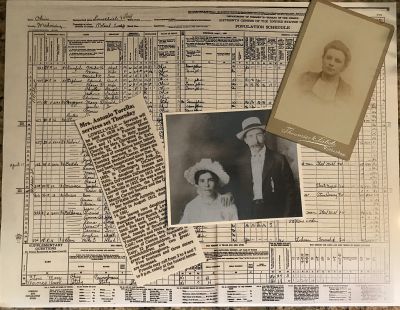Nearly three years ago, I started writing this monthly column on how to research your Italian roots. I thought it might be useful to revisit the initial column which provided some tips for those who are just starting out. Learning about your ancestors can be extremely interesting and extremely frustrating at the same time, but I can tell you from over 25 years of research experience that it is worth every bit of the joy and the anguish along the way. If you have an interest in learning about your family history, I encourage you to review the past columns I have written which are available online at www.lagazzettaitaliana.com for the basics of genealogical research and tips to help you find your more elusive ancestors and records.
While the focus of my column is on Italian American genealogy, the guidance in this column applies to family research in general, meaning that you can use it to search your ancestors no matter where they came from! Italian genealogy does present some challenges as compared to researching ancestors from America, but over the past few years, new online sources have made finding your roots much easier. You just need to know how to start and where to look.
Basic Facts Needed to Start Your Research
There are three basic facts that you will need to know to research your Italians roots. First, you need to know your ancestors’ original names. Many immigrant families changed their names over the course of the century for various reasons. Knowing an original name is the key to finding records. The second basic fact is the name of your ancestral village or town in Italy. Sometimes all we know is that our beloved nonna was from Italy! The third basic fact you need is an approximate date of birth for the ancestors that you are searching. Do not get discouraged if you do not know these basic facts, future columns will be devoted to tips on how to discover this information.
Start Your Research at Home
Before you start brushing up on your Italian and searching for cheap fares to Italy, my advice is to start your research right here in the good old USA. First, you are going to want to work to preserve information and documents that are fragile or could be lost! This means locating old records and making copies or having a conversation with your oldest living Italian American relative about what they know and remember. I cannot emphasize enough how important it is to talk with the oldest members of your family because they may have some important family history information which could be lost when that person is no longer with us. Trust me; there are many times I wished I had asked my nonna more questions while she was alive.
Document Your Sources
Another big tip is to write down what you discover and document your sources! You never know when you will need to go back to a source for more information. It is incredibly frustrating when you have a “fact” but do not remember where you got it and you find a discrepancy; or you did not know at the time that the source could reveal more information that would be useful in the future. To help with this last tip, there are different ways to document your sources. Some people like to do everything electronically and there are websites to build your family tree online or software to create a tree and store records to your computer. Others like everything on paper, and for that, there are forms to download and fill in. Then, there are people like me, who like to use multiple means for redundancy and backup. I use an online service, software and paper records. I have put a lot of work in my research and I do not want a computer crash, a software change or some other disaster to destroy it.
Where to Look Online
One last caveat about becoming a genealogist or family historian, for every question you answer about your ancestors, you will find that there are even more questions to be answered than you realized from when you started! Your search will never be complete; it will always be a work in process. Why? Because you have thousands of ancestors out there just waiting for you to discover them. Here are some suggested websites to help you get started:
Build an online family tree at www.familysearch.org. Always read the terms of service before using a website; to be extra safe, you may want to only add deceased individuals and not living individuals to an online tree for privacy and security reasons.
Find downloadable forms at
www.familytreemagazine.com/freeforms and www.cyndislist.com/free-stuff/printable-charts-and-forms/.
Use these sample questions for interviewing family at
www.thoughtco.com/fifty-questions-for-family-history-interviews-1420705.
This genealogy software will help in your research. https://www.smarterhobby.com/genealogy/best-genealogy-software/.



